Judith with the Head of Holofernes oil on canvas, 109 x 92 cm. Author: Venetian school late 17th century, workshop of Andrea Schiavone
Judith with the Head of Holofernes oil on canvas, 109 x 92 cm. Author: Venetian school late 17th century, workshop of Andrea Schiavone
Judith with the head of Holofernes
Technique and dimensions: oil on canvas, 109 x 92 cm.
Author: Venetian school, late 17th century , workshop of Andrea Schiavone
The painting we present draws direct inspiration from the famous Old Testament biblical book of Judith, constituting a vivid representation of the most significant episode narrated in it: during the reign of the Babylonian king Nebuchadnezzar, during the Assyrian siege of the city of Bethulia, Judith, a beautiful and rich Jewish widow, with the help of a stratagem, goes to the enemy chieftain, pretends to give in to the flattery of the Assyrian general Holofernes, gets him drunk during a banquet and has him killed by striking him twice in the neck with a sword.
The macabre trophy of war is then handed over by Judith to her handmaiden Abra, ready on the scene to receive it in her food bag.
The general's head was later displayed from the walls of the besieged city, forcing the Assyrians to retreat.
The uncompromising crudeness of the episode is contrasted in our canvas by an intrinsic “elegance” and “ability to transcend the mere imitation of nature”, qualities that Bortolotti grants and ascribes to the painter and engraver Andrea Schiavone (c. 1515-1563), born in Zara and Venetian by adoption.
Between Tintoretto, Titian, Bassano and Veronese, his is an “unprejudiced” pictorial language, appreciated by Tintoretto, Carracci and El Greco and celebrated by Ridolfi and Boschini for its predominant chromaticism.
Both the international conference held from 31 March to 2 April 2016 at the Sansoviniana bookshop of the Marciana Library and the exhibition “Splendors of the Renaissance in Venice: Andrea Schiavone between Parmigianino, Tintoretto and Titian”, comprising eighty works by the Master that had never been brought together before, made a decisive contribution to a more complete and in-depth knowledge of the artist.
Since we must exclude from the studies conducted an apprenticeship of Schiavone in Dalmatia, the documentary and stylistic evidence allows us to place him between Venetian art and the Mannerism of central Italy, in particular Parma (C. Ridolfi, “Le meraviglie dell'arte” (1648), edited by D. von Hadeln, i, Berlin 1914, p. 247).
An esteemed engraver, appreciated by Vasari who commissioned his first documented work, now unfortunately lost (Battle between Charles V and Barbarossa, 1540), Schiavone had the opportunity, starting from engravings, to perfect and refine his style, which was expressed in favour of “a fluid and darting line”, “elegantly decorative, which freely synthesises the forms by sketching the profiles of the figures with a rapid and nervous pace” (Bortolotti).
This fusion between the Mannerist component, especially Parmigianinian, and the post-Giorgionesque Venetian pictorial tradition is already well attested in its early stages in four small panels preserved at the Kunsthistorisches Museum in Vienna (two stories of Apollo and two stories of Jupiter), to which should be added four paintings, datable between 1542 and 1547, formal manifestos of the full reception of the Mannerist suggestions of Rome, Florence and Parma within Venetian painting (Samson Killing a Philistine, Florence, Pitti; Conversion of Saint Paul, Fondazione Querini-Stampalia, Venice; Marriage of Cupid and Psyche, Institute of Renaissance Studies, Florence, as well as its later version from a few years ago now at the Metropolitan Museum in New York).
However, these are all paintings that also testify to a certain non-negligible proximity to artists present on the lagoon scene and particularly sensitive to extra-Venetian suggestions: this is the case of Paris Bordon, Francesco Salviati as well as the young Tintoretto and Bassano.
A palpable and eloquent technical mirroring with our painting is shown by the Adoration of the Magi in the Pinacoteca Ambrosiana in Milan: similarly there emerges "an accentuated formalistic stylization" and a "dazzling chromatic progression, full of highlights, dissonances and chromatisms" (Bortolotti), all traits traceable in our Judith, giving reason for "a rapid, abbreviated, rough-hewn painting that paradigmatically exemplifies that "touch" technique that made school in the lagoon context of the mid-century" (Id.).
Andrea loves color. Speaking of another example of the same subject, now in a private collection, Mario dal Bello writes about Schiavone: “his Judith makes the fullness of purple reds and bright blondes sing.”
A true “outsider” with an unprejudiced language, Schiavone continues to seduce in all that is transgressive in his painting and continues to communicate to the man of today, thus creating a thread of subtle complicity whose message is like that of Giuditta: knowing how to dare.
EPOCH Thinking about making metafield with features
EPOCH Thinking about making metafield with features
Material
Materials
Materials
dimensions - transport or notes
dimensions - transport or notes
Share
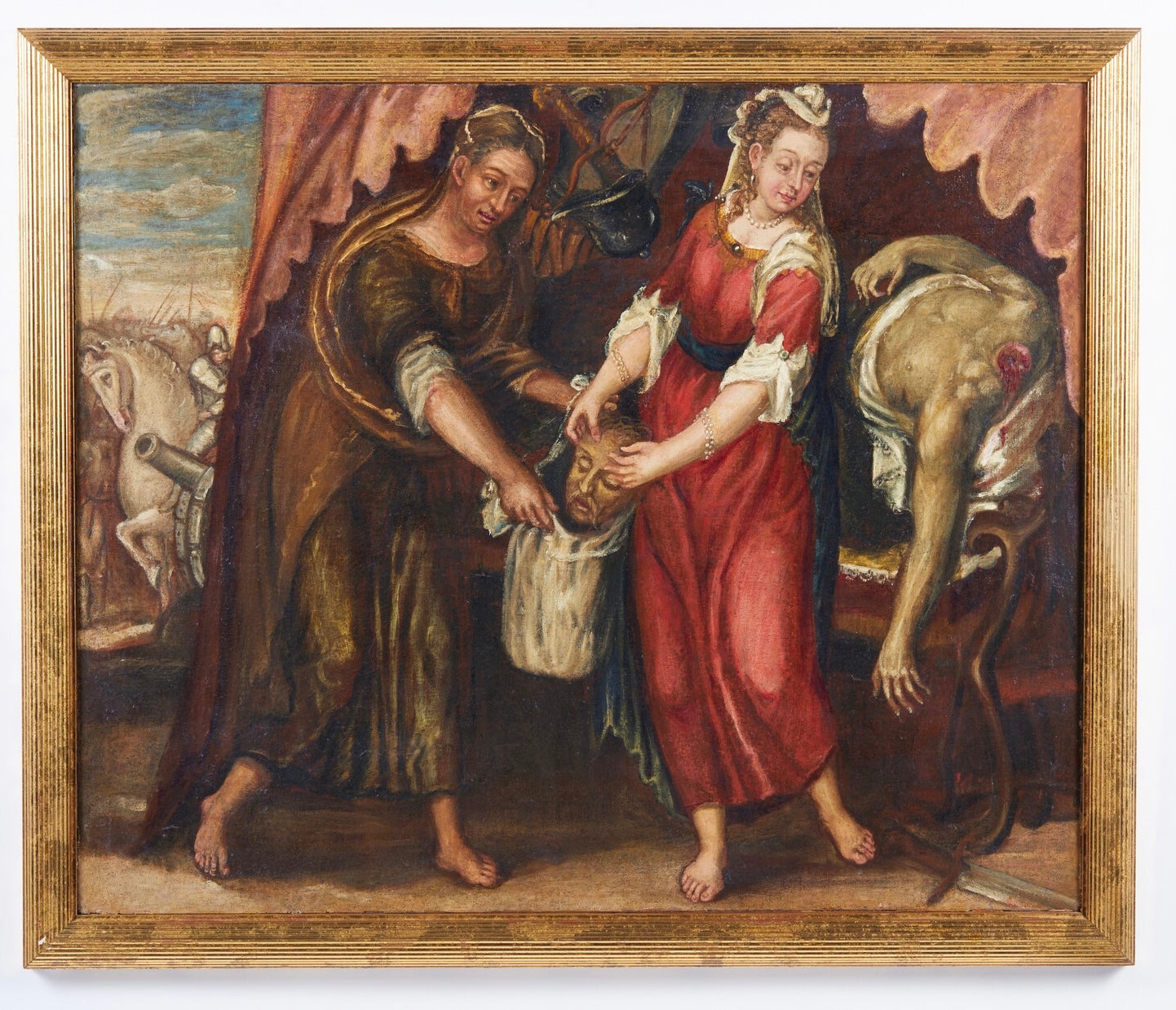
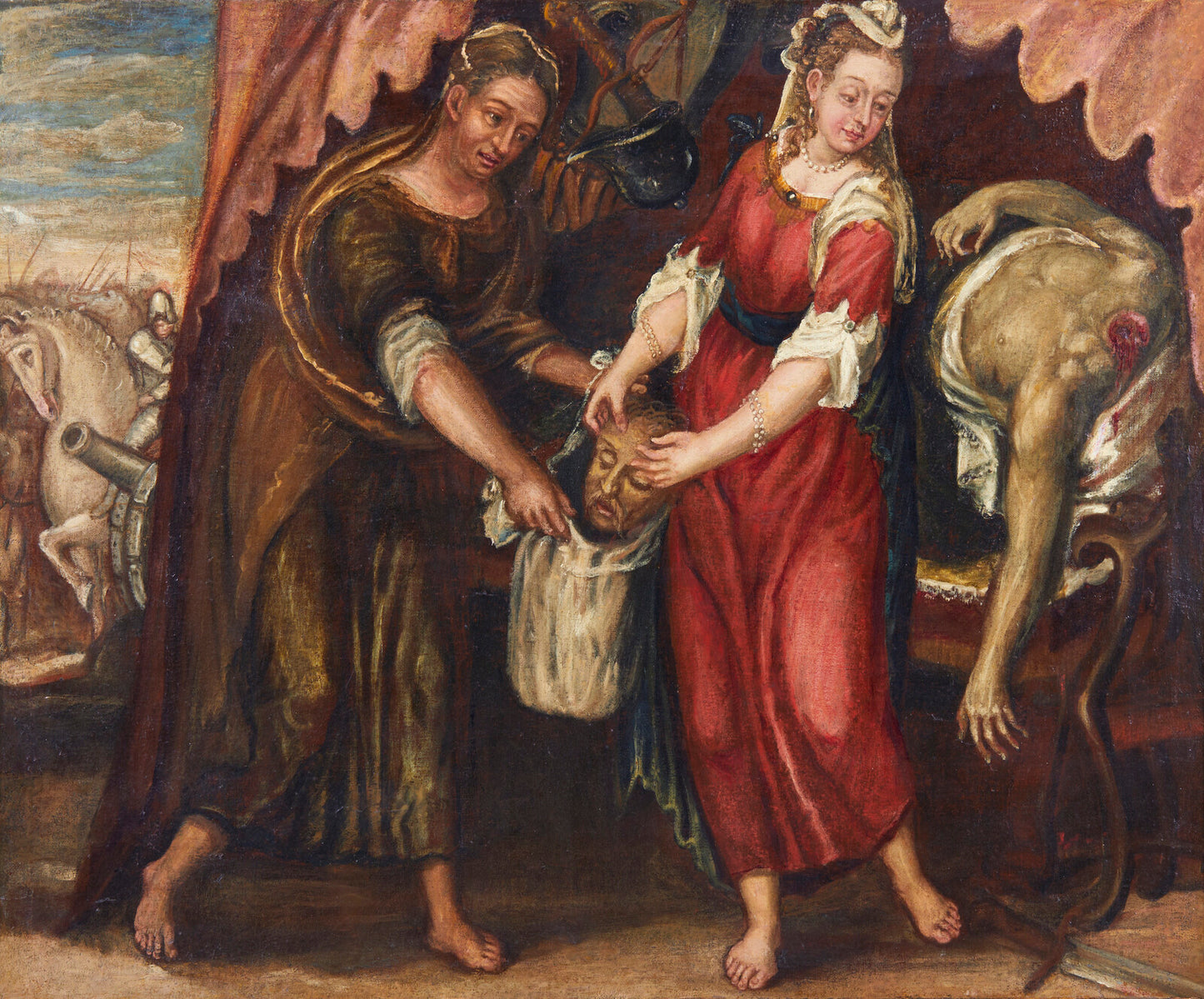
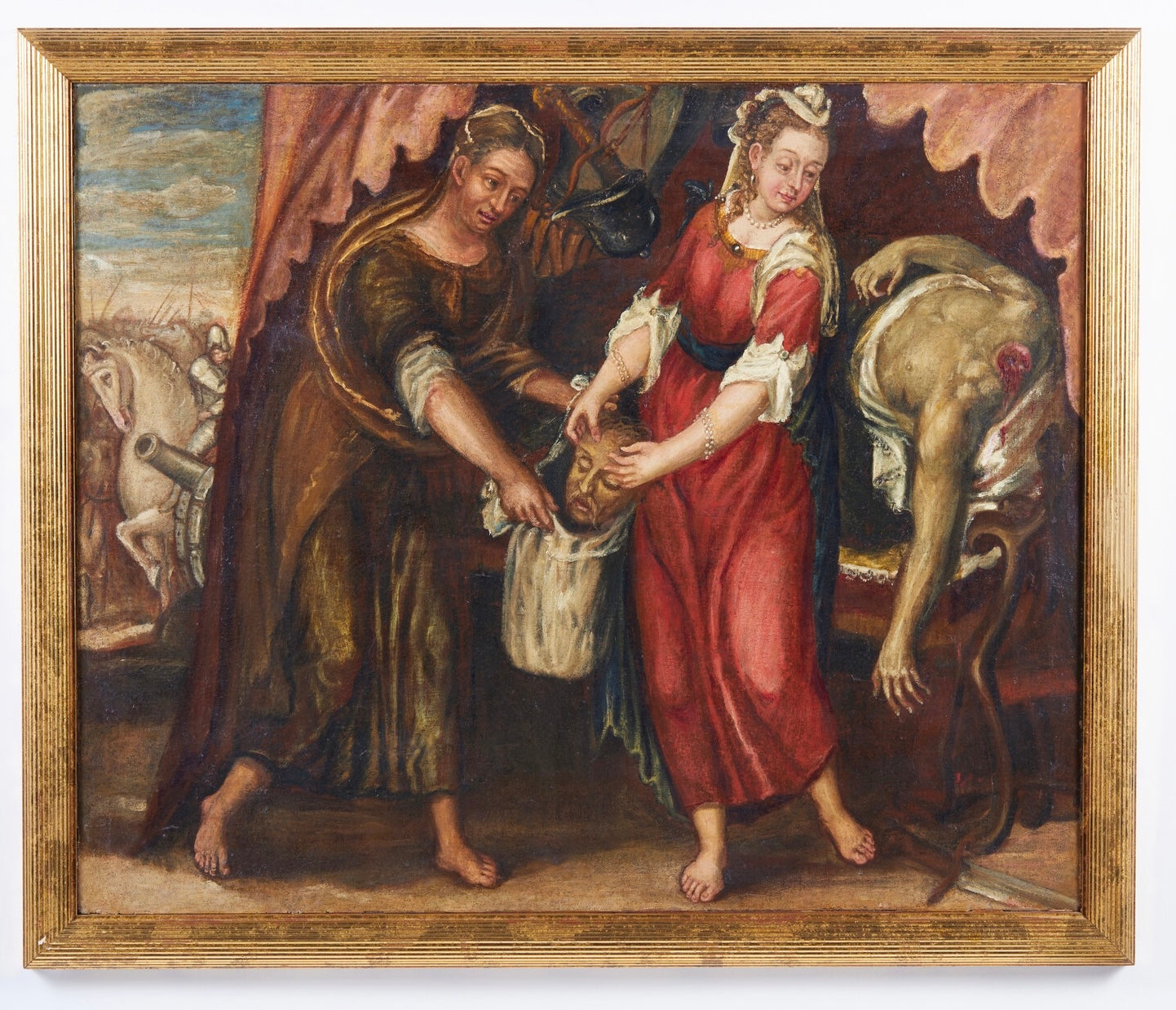
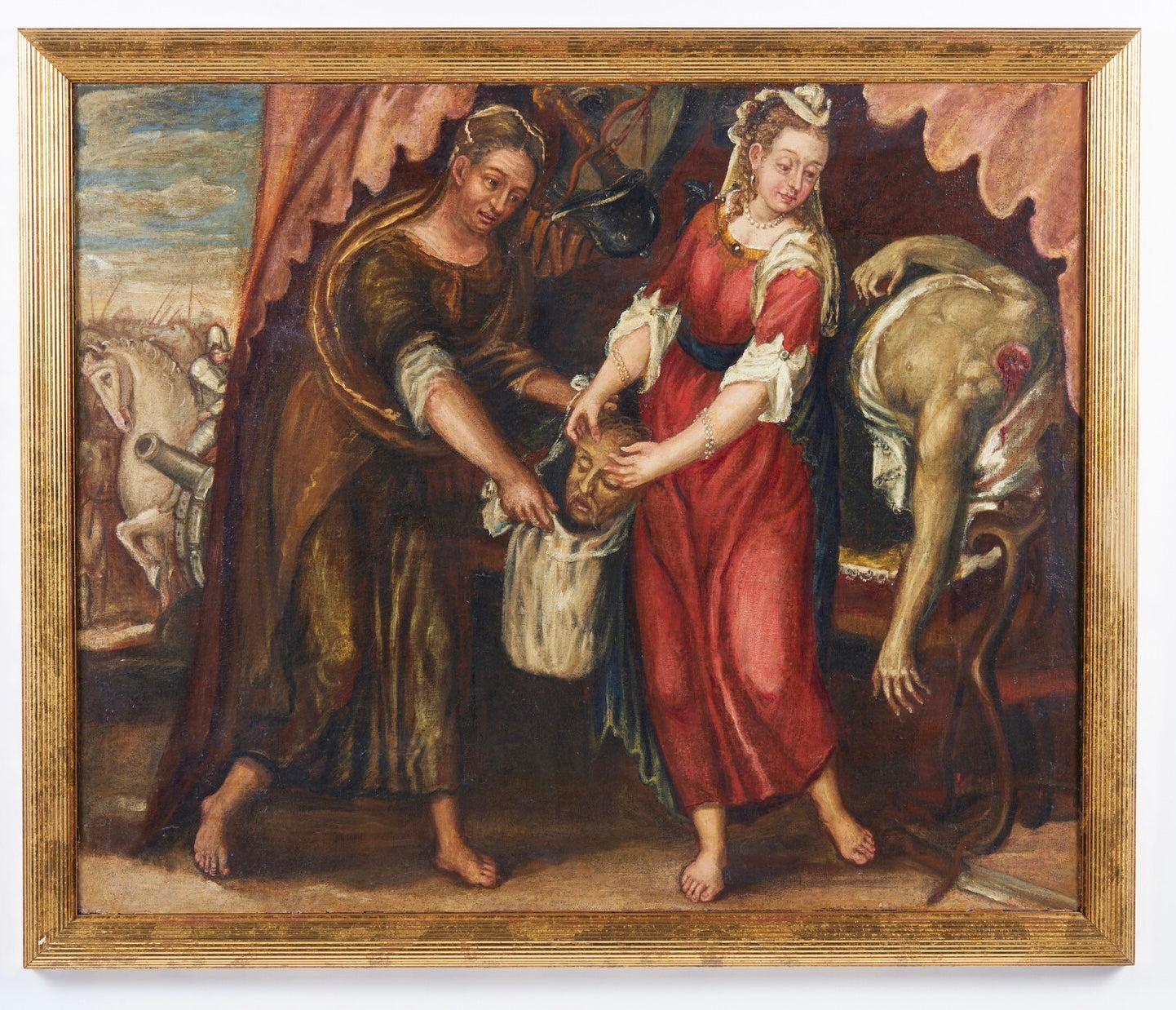
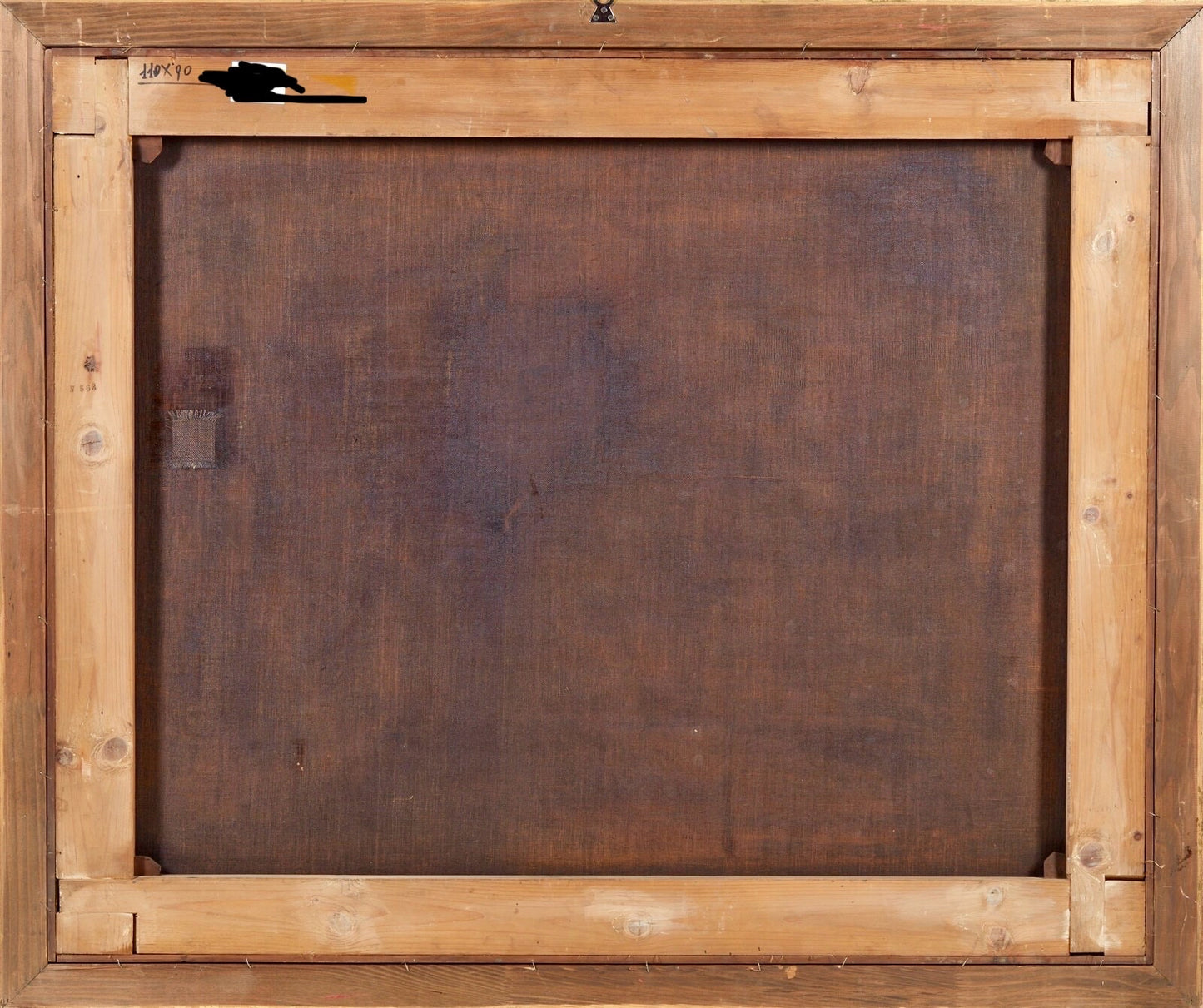
Frequently Asked Questions
Things to know
The items are in their natural state
All our pieces are authentic and retain the signs of time that tell their story. This means that they may present small imperfections, signs of wear or original patina, which for us are an integral part of their charm and uniqueness.
We restore on request
Unless explicitly requested, we leave the signs of time and imperfections intact, to preserve the authenticity and soul of the antique object. However, if you want a restoration intervention, our team of experts is at your disposal to evaluate together the most suitable solution.
We work only and exclusively by appointment
Our service is exclusive and personalized: we receive only by appointment to guarantee you our full attention. Contact us to arrange a meeting and discover our collection in complete tranquility.
How does transportation work?
We offer different transport solutions, depending on the size and delicacy of the item. We rely on specialized professionals to ensure that each piece arrives at its destination in perfect condition. Contact us for more details or to request a personalized quote
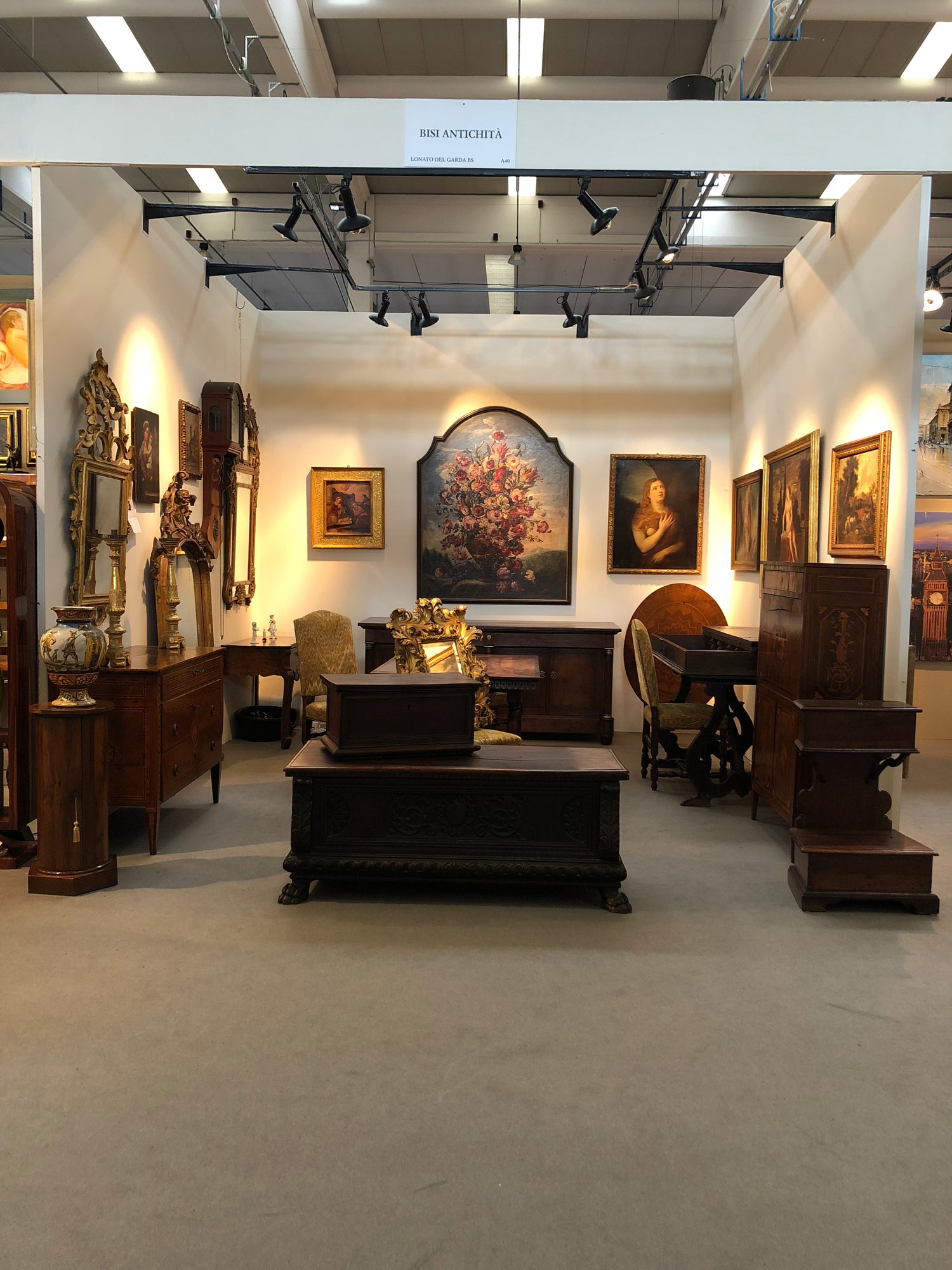
QUALITY AND PASSION FOR GENERATIONS
Since the mid-19th century, our family has been working wood with dedication, transforming a small workshop in Poggio Rusco into a reality rooted on Lake Garda. Since 2014 , we have moved away from the family tradition of furniture production, orienting ourselves towards the restoration and search for ancient treasures to offer to our customers, keeping intact the values of authenticity and quality.





